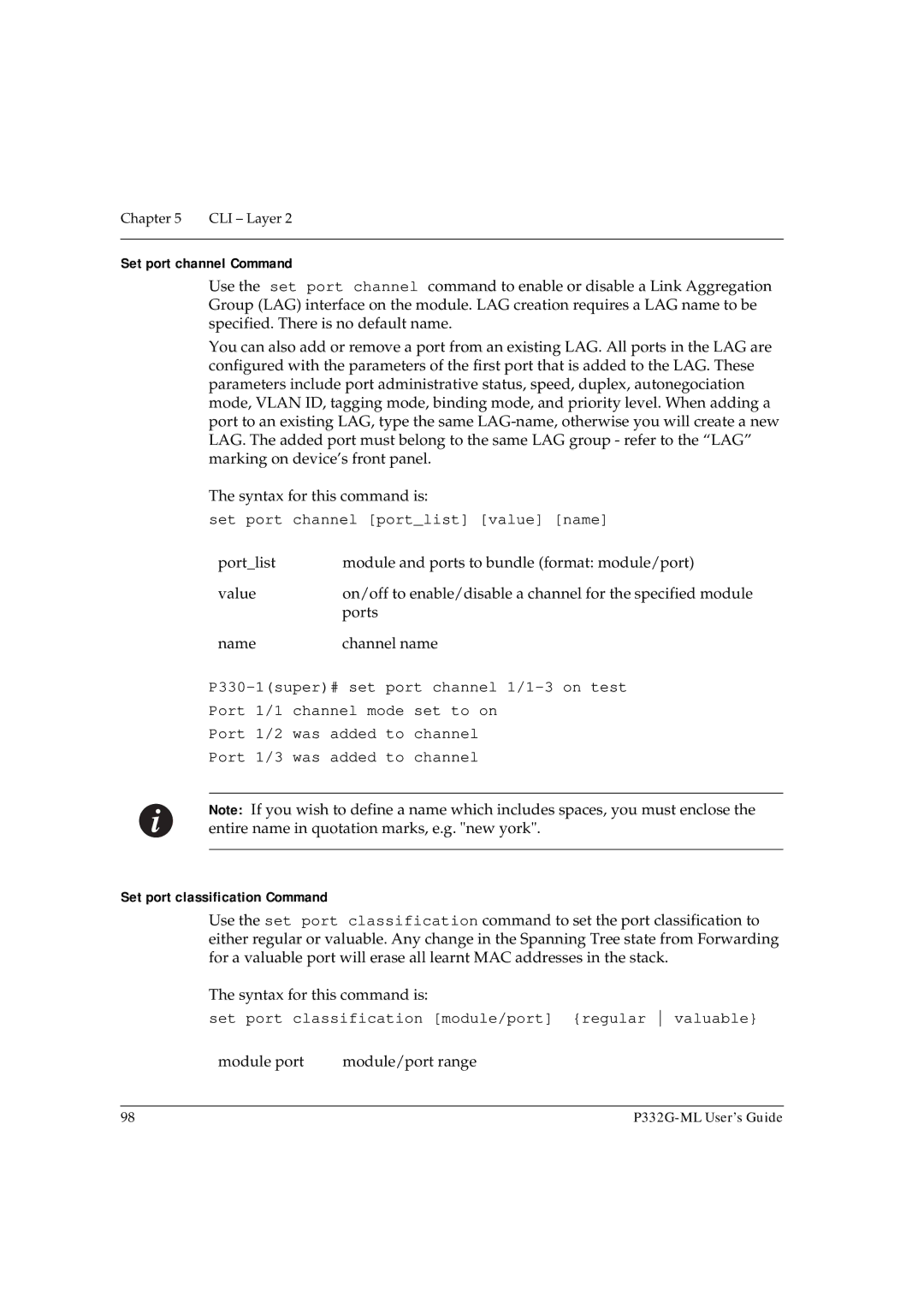
Chapter 5 | CLI – Layer 2 |
|
|
Set port channel Command
Use the set port channel command to enable or disable a Link Aggregation Group (LAG) interface on the module. LAG creation requires a LAG name to be specified. There is no default name.
You can also add or remove a port from an existing LAG. All ports in the LAG are configured with the parameters of the first port that is added to the LAG. These parameters include port administrative status, speed, duplex, autonegociation mode, VLAN ID, tagging mode, binding mode, and priority level. When adding a port to an existing LAG, type the same
The syntax for this command is:
set port channel [port_list] [value] [name]
port_list | module and ports to bundle (format: module/port) |
value | on/off to enable/disable a channel for the specified module |
| ports |
name | channel name |
Port 1/1 channel mode set to on
Port 1/2 was added to channel
Port 1/3 was added to channel
Note: If you wish to define a name which includes spaces, you must enclose the entire name in quotation marks, e.g. "new york".
Set port classification Command
Use the set port classification command to set the port classification to either regular or valuable. Any change in the Spanning Tree state from Forwarding for a valuable port will erase all learnt MAC addresses in the stack.
The syntax for this command is:
set port classification [module/port] {regular valuable}
module port | module/port range |
98 |
